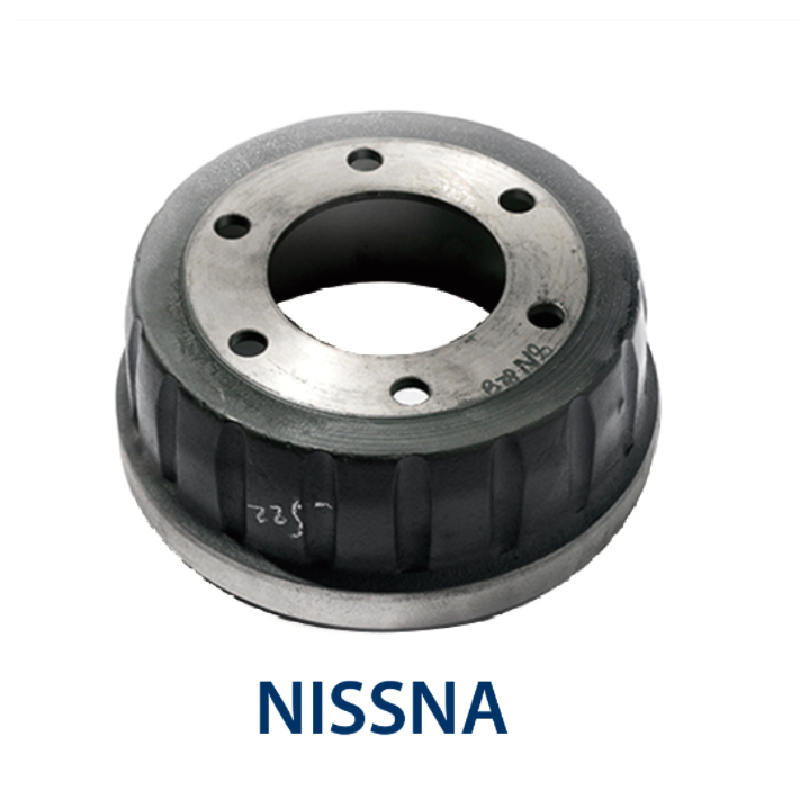Ноя . 29, 2024 10:24 Back to list
Components and Functionality of a Brake Drum Explained in Detail
Understanding the Parts of a Brake Drum
Braking systems are critical components in the safety of any vehicle, and the brake drum is a vital part of drum brake systems. Unlike disc brakes that utilize a flat rotor, drum brakes operate using a cylindrical drum that houses the braking mechanism. This article will explore the various parts of a brake drum and their functions, highlighting how they work together to ensure safe and effective vehicle braking.
1. The Brake Drum
At its core, the brake drum is a hollow, cylindrical piece of metal typically made from cast iron or aluminum alloy. Its main function is to provide a surface for the brake shoes to press against in order to create friction and slow or stop the vehicle. The inner surface of the drum is machined to provide a smooth surface for optimum contact with the brake shoes, which is essential for effective braking performance.
2. Brake Shoes
The brake shoes are crucial components that are positioned inside the brake drum. They are typically curved metal plates lined with a friction material. When the driver presses the brake pedal, hydraulic fluid is forced into the brake cylinder, pushing the brake shoes outward against the inner surface of the drum. This action creates friction, which slows the rotation of the drum and ultimately stops the vehicle.
The friction material on the brake shoes is designed to withstand high temperatures and provide adequate stopping power without excessive wear.
3. Wheel Cylinder
The wheel cylinder is a small hydraulic component located at the rear of the brake assembly. When brake fluid is applied, the wheel cylinder expands, pushing the brake shoes outward against the drum. This hydraulic mechanism allows for efficient transfer of force from the brake pedal to the brake shoes, making the braking process responsive and reliable.
4
. Return SpringsAfter the driver releases the brake pedal, the return springs play a vital role in retracting the brake shoes back to their original position. These springs are attached to the brake shoes and pull them away from the drum, ensuring that they do not maintain constant contact with the drum when the brakes are not engaged. This retraction is important not only for reducing unnecessary wear on the brake shoes but also for preventing overheating of the drum from constant friction.
parts of a brake drum

5. Adjuster
Many drum brake systems have an adjustment mechanism to maintain the proper distance between the brake shoes and the drum. This adjuster compensates for wear on the shoes over time and ensures that the brakes remain effective. In some systems, this is an automatic adjuster that engages every time the brakes are applied, while in others, it may require manual adjustments.
6. Backing Plate
The backing plate is the structural component that holds all the brake parts in place. It provides stability to the brake assembly and protects it from dirt, debris, and moisture. The backing plate also has several attachment points where the brake shoes, wheel cylinder, and springs secure.
7. Drum Retaining Hardware
To ensure that the brake drum stays securely attached to the wheel, various retaining hardware components are used, such as bolts and clips. These parts prevent the drum from moving or loosening during operation. Proper installation and maintenance of this hardware are crucial for safe braking performance.
8. Power Brake Booster
While not a part of the drum itself, the power brake booster is critical in enhancing braking power. This component uses vacuum or hydraulic pressure to multiply the force exerted by the driver on the brake pedal. This means that even a light push on the pedal can produce substantial force on the brake shoes, improving the effectiveness of the drum brake system.
Conclusion
Understanding the parts of a brake drum is essential for anyone looking to maintain their vehicle’s braking system effectively. Each component, from the drum itself to the brake shoes, wheel cylinder, and springs, plays a significant role in ensuring that brakes function safely and efficiently. Regular inspections and maintenance can help keep these parts in optimal condition, contributing to overall vehicle safety and performance. It's crucial to acknowledge the importance of these systems and ensure they are well cared for, as they are directly tied to the safety of every journey taken on the road.
-
High-Quality Trailers for Towing Needs | Shop Now
NewsJul.25,2025
-
Premium MAN Shaving Kit for Effortless Comfort
NewsJul.25,2025
-
HINO Advanced Machinery Solutions - LONGYAO COUNTY YIHANG MACHINERY | Industrial Efficiency&Customization
NewsJul.21,2025
-
HINO Machinery Solutions - LONGYAO COUNTY YIHANG MACHINERY MANUFACTURING CO.LTD | Precision Engineering, Customizable Configurations
NewsJul.21,2025
-
HINO Machinery Solutions - LONGYAO COUNTY YIHANG MACHINERY MANUFACTURING CO.LTD | Precision Engineering, Customizable Configurations
NewsJul.21,2025
-
HINO Machinery Solutions - LONGYAO COUNTY YIHANG MACHINERY MANUFACTURING CO.LTD | Precision Engineering, Customizable Configurations
NewsJul.21,2025
